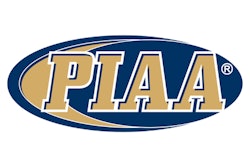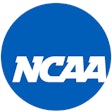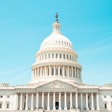
Despite having to deal with the many challenges of recent years, Division I student-athletes continue to perform well in the classroom. The national four-year Academic Progress Rate is 984, up 1 point from the last publicly reported rate in May 2020. Men's basketball improved by 2 points to 968, while baseball (977), football (964) and women's basketball (983) remained steady for their four-year average.
The public announcement of APRs returned after a one-year hiatus. This spring, the Division I Board of Directors voted to continue to suspend APR penalties for an additional year due to the impact of the COVID-19 pandemic; however, it supported the public release of the APR data.
"The APR data continues to demonstrate the high level of academic achievement of our student-athletes and teams, and their resiliency to excel through a global pandemic and instability in the intercollegiate landscape," said Division I Committee on Academics chair Dianne Harrison, president emerita at California State University, Northridge. "The APR has been and continues to be a valuable real-time tool that provides us with an opportunity to identify and work with schools that may need additional assistance to improve their academic support services. Overall, the Academic Performance Program furthers the NCAA's commitment to academic excellence and integrity, and the public release of this APR data while penalties are suspended is a reasonable interim step."
Each academic year, every Division I sports team across the country calculates its APR using a simple and consistent formula. Each term, scholarship student-athletes can earn 1 point for remaining eligible and 1 point for staying in school or graduating. For schools that do not offer scholarships, recruited student-athletes are tracked.
The Academic Performance Program has established an essential framework for academic excellence. The program provides measurable goals to ensure schools are fulfilling their commitment of equipping student-athletes with the tools and resources necessary to achieve academic success.
Throughout 18 years of the Academic Performance Program, more than 20,000 student-athletes have gone back to school to earn their degrees — earning points for their former team. These student-athletes are typically not counted in the federal graduation rate or Graduation Success Rate calculations.
The minimum APR academic standard for each team is 930. Typically, teams that scored below the benchmark would have to face penalties that encourage an emphasis and prioritization on academics. However, due to the current penalty suspension in place, teams will not be subjected to penalties this year. Last year, APR data was not released publicly, and penalties were not assessed.
The Division I Committee on Academics has developed and implemented policies and initiatives to improve academic support services on campuses. Additionally, the national office is actively involved in working with schools to enhance their academic programs to help student-athletes successfully earn their degrees.
A full list of APRs for each team can be accessed by using the APR searchable database.




































